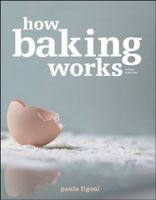Advertisement
Questions for Review
Appears in
By Paula Figoni
Published 2003
- Which protein, glutenin or gliadin, provides the backbone structure to gluten, imparting strength and tenacity?
- What are the three main ways that gluten is developed during bread making?
- What is the difference between extensibility and elasticity? Which protein, glutenin or gliadin, is primarily responsible for each?
- What is meant by fermentation tolerance? How does fermentation tolerance affect bread loaf volume and crumb structure?
- What are the characteristics of a high-quality flour used in bagels? In cookies?
- Will a small increase in the amount of water added to pie pastry dough be likely to increase or decrease gluten development? Explain your answer.
- Will a small increase in the amount of water added to superhydrated bread dough be likely to increase or decrease gluten development? Explain your answer.
- How would you describe the difference between water hardness and water pH? How does each affect gluten development?
- Will a small amount of baking soda added to cookie dough increase or decrease cookie spread? Why might baking soda have this effect?
- Describe how mixing promotes the development of gluten.
- How does too little mixing affect the quality of baking powder biscuits? How does too much mixing affect them?
- What is meant by the letdown stage of mixing yeast-raised doughs?
- Which is more likely easily overmixed: dough containing a blend of rye and bread flour, or one containing only bread flour? Dough made with regular bread flour or one made with a lower-protein artisan bread flour?
- What is one cause of tunnels in muffins? How can using a formula high in sugar and fat reduce the likelihood that tunnels will form?
- Why should doughs that undergo longer fermentation or proofing times be mixed for a shorter time than those that undergo just a short proof?
- How does dough temperature affect gluten development? What else does dough temperature affect in pie pastry doughs? In bread doughs?
- What three events occur during dough fermentation? Which of these three can also be accomplished by intensive high-speed mixing or by chemical maturing agents?
- What is meant by “no-time dough”? What is the main advantage of no-time dough? What is the main disadvantage?
- What is meant by a “reducing agent”? When might reducing agents be beneficial?
- What is glutathione and where is it found?
- What are proteases and how do they affect gluten?
- Which of the following in each pair is likely to have more protease activity: rye flour or wheat flour; white flour or whole wheat flour; liquid pre-ferment, with a high amount of water, or a firmer pre-ferment with a lower amount of water; a pre-ferment with added salt, or a pre-ferment with no added salt?
- Why might a rich sweet dough call for high-gluten flour?
- Why will pie pastry dough bake up more tender when the fat is well worked into the flour (before water is added) than when it is left in larger chunks?
- How does salt affect gluten in yeast-raised doughs?
- Why might bread made with salt have a whiter crumb than bread made without salt?
- Why is fluid milk usually scalded before it is used in yeast-raised doughs? Why might you not want to scald milk before use?
- What is meant by “high-heat DMS”? What is it used for?
- You are shaping pizza dough, but it shrinks before you have a chance to add toppings and bake. What should you do?
- What is the difference between gluten development and gluten relaxation?
- What are the three reasons why pie pastry dough might be chilled and allowed to rest several hours or overnight before use?

